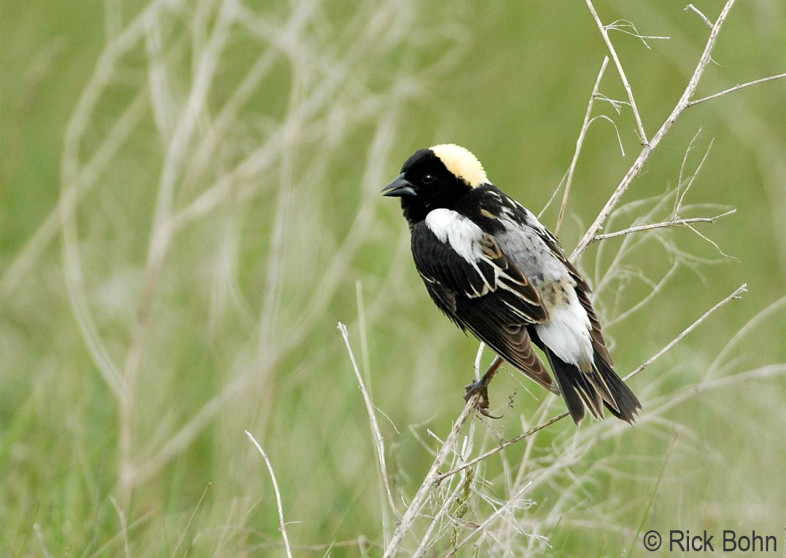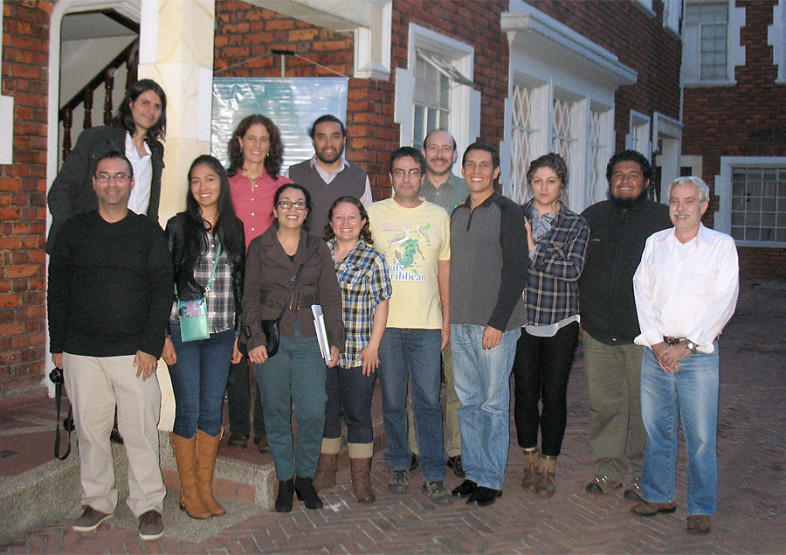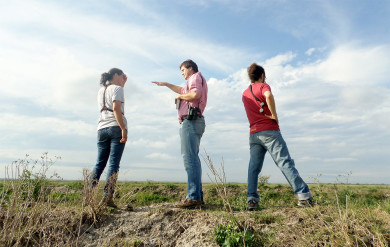I GREW UP WATCHING, in awe, the Harlem Globetrotters. Their superhuman feats on the court and their mastery of movement made them look more like magicians than basketball players.
Maybe that’s why I study the Bobolink, a bona fide globetrotter. Masters of movement across the globe, they travel from the prairies of Canada to the ranchlands of Argentina — 12,000 miles each year, every year. That, too, is magical.
Conservation of the globe-trotting Bobolink is by necessity a hemispheric endeavor. “Full life cycle” conservation, an important concept whose time has come, means responding to the threats that migratory birds face throughout the year, not just during one season. It takes us to new places conceptually and often literally. That’s why I spent two months in South America this fall, working with local conservation partners on a long-term conservation plan for this declining grassland bird magician.
To take on the challenge of “holistic” Bobolink conservation, I traced the migratory path of the species. I booked my plane tickets based on location data from light-level data loggers, which acted like my travel agents and set my destinations: the Llanos grasslands of Venezuela and Colombia, the lowlands of eastern Bolivia, and the rice fields and grasslands of northeastern Argentina. The geolocator data suggest that all these places play a substantial role in the life of a Bobolink.
Working with local partners, we held workshops attended by ornithologists, ecologists, and agronomists. Participants were hand-picked to provide expert input into a Full Life Cycle Conservation Plan for Bobolink. The US Fish and Wildlife Service contracted VCE to write a plan that would not only address the conservation needs of Bobolinks, but also benefit the suite of species that share the same grassland habitats.
Despite the fact that Bobolinks roam seamlessly across South America, each country is, of course, distinct in culture, environmental challenges, and land-use practices, to name a few.
Our Venezuelan partners joined us in Colombia; the two countries share the vast Llanos grasslands. Bobolinks stop there for weeks in the fall and more briefly in the spring, but until now, nobody had paid much attention. As in many places in the world, the grasslands there have been valued only as a potential source of food or energy — something to use. Despite the unknowns, workshop participants provided plenty of ideas for first steps towards grassland conservation in the Llanos. By the time we wrapped up, my partners from Asociación Calidris (Colombia) and Fundación W.H. Phelps (Venezuela) were excited to get to work figuring out where Bobolinks are when they all converge in the Llanos in October, and how their distribution may have shifted over the last several decades.
My next stop was Argentina, where the bulk of Bobolinks overwinter for up to 4 months. Bobolinks are notorious pests in rice in South America, and partners from Aves Argentinas have been doing bird research and farm and community outreach for a decade. Backed with ample insight from that work, participants at this workshop cranked out ideas to address important information gaps, conserve working grasslands, and promote bird-friendly rice production. We also met directly with farmers interested in working with conservationists. And the certified bird-friendly beef (developed by the region’s “Grassland Alliance”) did not disappoint, despite my very high expectations.
I purposely saved Bolivia for last. This often overlooked country is vital to Bobolinks. Nearly the entire global population funnels through Bolivia on its southbound trip from the Llanos to Argentina. Some birds move through in a few days, others linger for up to three weeks, and up to one quarter of the population inhabits Bolivia for the entire winter.
We’ve learned about the overwintering birds in Bolivia in our past research, but we know almost nothing about the habitats used by the individuals that pass through, on the move. My most valuable take-away from talking with partners at Asociación Armonia was simple: the region where the Bobolinks migrate through is also called home by some of Bolivia’s most critically endangered species. Conserve the Bobolink, and protect these resident treasures — and vice versa. In our workshop we explored how we might protect a migratory species like Bobolink and endangered resident species at the same time — wise conservation.
I returned to the U.S. exhausted, wondering how on earth these birds do it. Gastrointestinal hitchhikers provided assurance that it was indeed time to be home. Despite the physical toll, I was utterly inspired and humbled, grateful for the ties I forged and the progress we all made together. I returned with the particular view of a Bobolink, of many places, separated by thousands of miles, so clearly linked, each with unique challenges, but often similar at their roots. The people differ but their vision and passion are shared. That’s what it will take to save a globetrotter.




Thanks for the update Roz!
This is very inspiring.
Happy Holidays.
Michael
What a long way YOU and the Bobolink are from that first trip some of us took to Paraguay in 2006. It’s so exciting to read about where the knowledge base is today! Way to go… Roz and VCE!
Awesome work! Truly fantastic!
Thanks for this great work Roz. Really inspiring!
Jared